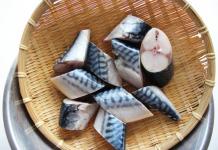Coming from Italy, Savoy cabbage gradually began to gain popularity among us. Its delicate taste and beautiful appearance do not leave even gourmets indifferent, and its culinary capabilities provide a wide range of cooking options. Learn about the benefits and harms of eating Savoy cabbage from this article, and also use recipes for preparing simple dishes and preparations for the winter to appreciate its amazing taste.
Where does Savoy cabbage come from and what's special about it?
This type of cabbage is native to northern Italy, where it has been cultivated for more than 500 years. It owes its name to one of the northern Italian duchies, which disappeared from the map of Europe at the beginning of the 18th century. In Italy itself it is usually called Milanese or Lombard, and in the Czechs – French.

Externally, its forks are quite similar to, but are looser due to highly corrugated leaves. The undeniable advantage of Savoy cabbage is its delicate taste, which is superior in quality to the taste of its white relative. Europeans, as well as residents of the USA and Canada, actively use it to create a variety of dishes.
From an agrotechnical point of view, Savoy cabbage is more resistant to weather changes and diseases, can withstand droughts and frosts down to -8° C, but is less productive than white cabbage and is stored worse - only 1-2 months. It is cultivated through seedlings and is no different in care from cabbage cabbage. The yield level is up to 8 kg per 1 m².
Useful and harmful properties
The biochemical composition of Savoy cabbage is diverse; it contains

Attention! Among the rare vitamins, in the chemical composition of savoy cabbage you can find vitamin U, which is beneficial for the liver, and vitamin K, which is beneficial for the blood.
Savoy cabbage is rich in antioxidant bioactive substances - glutathione, ascorbigen and polyphenols. Glutathione neutralizes radicals, protects against carcinogens, and prevents premature aging of cells. Ascorbigen inhibits the growth of cancer cells. Polyphenols – protect against atherosclerosis, ischemia and neurological diseases.

Savoy cabbage only lasts 1-2 months
Attention! Including savoy cabbage in the diet will be especially useful for children, diabetics and the elderly, since it is easily digestible and also contains the substance mannitol, a natural sugar substitute.
Adding savoy cabbage to the menu will allow you to:
- get rid of swelling and excess weight;
- normalize blood pressure;
- saturate the body with vitamins;
- strengthen the immune system and bone tissue.
Attention! Savoy cabbage should be excluded from the diet during surgery in the abdominal cavity or chest, as well as exacerbation of thyroid and gastrointestinal diseases associated with high acidity.
It is recommended to include it in the diet of those who suffer from liver disease, hypertension, prostatitis, and obesity. Low calorie content and high nutritional qualities allow Savoy cabbage to be recommended for use in a diet menu for weight loss.

Savoy cabbage can be used for weight loss
What to cook with savoy cabbage
Savoy cabbage can replace white cabbage, and the dish will not lose its taste. The only point where it is inferior to white cabbage is pickling. As practice shows, Savoy cabbage is not suitable for sourdough. Those who would like to stock up on it for the winter are advised to pickle or dry it. The recipes presented below will allow you to do this correctly.
1. Pickled cabbage. For one 3 liter jar you will need:
- Savoy cabbage - 2 kg forks;
- salt – 100 g;
- sugar – 120 g;
- water – 2 l;
- vinegar - 1 glass;
- bay leaf, black pepper.
Chop the cabbage into strips and grind with half the amount of salt. Place tightly in a jar and place in the refrigerator for several hours. From the remaining ingredients, cook the filling, adding vinegar at the end. Pour the cooled marinade mixture over the cabbage. Cover with a lid, transfer to the cellar for storage, and serve after 1 week.

Savoy cabbage can be used as a side dish or as a meal on its own
Advice! Pickled Savoy cabbage can be used to make salads, as well as a filling for pies, after stewing it with carrots, mushrooms or meat.
2. Savoy cabbage stew. Fry the chopped onion, add shredded savoy cabbage and some cranberries, salt and ground spices - pepper, cardamom and coriander. Stirring, simmer for half an hour. Add grated apple and apple cider vinegar to the stewed cabbage and simmer for another 5 minutes.
Advice! Stewed cabbage is a wonderful side dish for meat or fried sausages. And those who care about their figure can eat it as a main dish.
3. Savoy cabbage marinated in Korean style. For two 3-liter jars you will need 1 kg:
- savoy cabbage;
- carrots;
- sweet pepper;
- Luke;
- garlic - heads;
- hot pepper – 1 pod;
- sugar – 5 tbsp. spoon;
- salt – 2 tbsp. spoons;
- vinegar 9% and vegetable oil - 1/3 cup each;
- ground black and red pepper - 1 teaspoon each. spoon.

Savoy cabbage is a good alternative to white cabbage
Coarsely chop the cabbage into square petals, add chopped bell peppers and grated carrots. Grind with your hands to form juice. Add both ground peppers, sugar, salt, vinegar, chopped garlic and hot pepper, chopped and lightly fried onion to the cabbage. After mixing the salad mixture well, cover it with pressure for 6 hours. Then transfer to jars and close with nylon lids. Shelf life – up to 3 months.
Using the basic recipe for pickling savoy cabbage, it can also be prepared with rowan, sour apples.
4. Vegetable salad. To the savoy cabbage shredded and mashed by hand, add thinly sliced cucumber and sweet pepper, grated carrots, onion half rings, lettuce leaves torn into pieces by hand. Season with sweet and sour dressing consisting of 3 tbsp. spoons of wine vinegar, 2 tbsp. spoons of honey and sour cream, spoons of mayonnaise, a little Dijon mustard and olive oil
Advice! In order to keep Savoy cabbage fresh longer, it is recommended to store only late-ripening varieties - “Cosima F1”, “Alaska F1” and others. Forks are best stored together with the roots. The roots of Savoy cabbage can be buried in sand or in an earthen trench, so that the forks do not touch each other. You can also store it by hanging one head of cabbage in a net.

To keep savoy cabbage longer, you can hang it in a net.
5. Frozen Savoy cabbage. Freezing is a great way to prepare savoy cabbage for making cabbage rolls in the winter. To do this, remove the stalk from the cabbage fork and disassemble the fork itself into leaves. Blanch the leaves for 3 minutes in boiling water. Remove, rinse with cold water, and drain. Roll up into tubes and place 10-12 cabbage leaves into bags. To freeze. In addition to whole cabbage leaves, you can also freeze shredded savoy cabbage and then use it to prepare fillings or stews.
Savoy cabbage is a vegetable that is still underestimated by gardeners. Growing it on your own plot makes it possible to harvest tender cabbage and prepare from it not only delicious dishes, but also healthy preparations for the winter.
The benefits and harms of savoy cabbage - video
Savoy cabbage - photo






SAVOY CABBAGE FOR THE WINTER FROM VASILISA IS NOT EASY FOR THE “IN A JAR” GROUP The experiment lasted 1 month! Nothing has exploded yet. All samples have been taken. Below is only what tastes good in the opinion of at least five adequate people :))) First, some useful tips and notes! You cannot boil cabbage in an aluminum pan: it may change color. We only take enamel dishes. If the cabbage is bitter, it must be blanched before the main process. During pre-cooking, to prevent the cabbage from becoming soft, you must add citric acid. In a Jar © Salted Savoy cabbage Prepare the marinade: put 2 tbsp per 1 liter of water. salt and 3 tbsp. sugar, ½ cup 9% vinegar, a glass of vegetable oil, 10 black peppercorns, 3 bay leaves. Peel the heads of Savoy cabbage from the outer leaves, chop into large pieces, and place in jars. Put garlic and dill there. Pour hot marinade and roll up with sterilized lids. Sauerkraut Savoy cabbage There is an opinion that you cannot ferment Savoy cabbage. But Vasya is stubborn, Vasya does not listen to other people's advice. And he gets what he deserves for it! You can ferment savoy cabbage! Apparently it depends on the variety. I don’t know what variety I have, the cabbage was bought secondhand and I couldn’t find a seller to ask. Peel the heads of Savoy cabbage from the outer leaves and chop finely. Grind the shredded savoy cabbage with salt at the rate of 1 tbsp. salt per 1 kg of cabbage. Add 1 tsp. dill seeds per 1 kg of cabbage. Mix the mixture, place tightly in jars, close with plastic lids and put in a cool place for a week. Options for mixtures for sauerkraut: 10 kg of cabbage, 25 g of cumin or dill seeds, 200-250 g of salt; 10 kg of cabbage, 25 g of cumin or dill seeds, 100 g of dried juniper berries, 200-250 g of salt; 10 kg of cabbage, 300 - 500 g of carrots, 25 g of caraway seeds or dill, 200-250 g of salt; 10 kg of cabbage, 400 - 450 g of carrots, 350 - 400 g of parsnip root, 200-250 g of salt; 10 kg of cabbage, 200-250 g of carrots, 150-200 g of parsley, celery and parsnip roots, 25 g of caraway seeds or dill, 200-250 g of salt; 10 kg of cabbage, 300 g of carrots, 200 g of onions, 25 g of dill or caraway seeds, 200-250 g of salt; 10 kg of cabbage, 500 g of carrots, 100 g of onions, 3 - 4 bay leaves; 10 kg of cabbage, 500 g of apples, 25 g of dill or caraway seeds, 200-250 g of salt; 10 kg of cabbage, 300 g of carrots, 150 g of apples, 25 g of caraway seeds or dill, 200-250 g of salt; 10 kg of cabbage, 300-500 g of carrots, 200 g of apples, 25 g of caraway seeds or dill, 80 g of dried juniper berries; 10 kg of cabbage, 200 g of cranberries (lingonberries), 100 g of carrots, 25 g of caraway seeds or dill, 200-250 g of salt; 10 kg of cabbage, 200 g of red rowan berries, 300 - 500 g of apples, 25 g of caraway seeds or dill, 200-250 g of salt. Pickled Savoy cabbage Prepare the marinade: put 2 tbsp per 1 liter of water. salt and 2 tbsp. sugar, 1.5 cups 9% vinegar, 10 black peppercorns. Cool to room temperature. Peel the heads of Savoy cabbage from the outer leaves, chop finely, place tightly in jars, pour marinade, cover with plastic lids and put in a cool place for a week. Savoy cabbage in sweet and sour marinade Prepare the marinade: put 2 tbsp per 1 liter of water. salt, 5 tbsp. sugar, ½ cup 9% vinegar, 5 allspice peas, 3 bay leaves, 1 tbsp. l mustard seeds. Peel the heads of Savoy cabbage from the outer leaves and chop into large pieces. Pour water into a saucepan, bring to a boil, add ½ tsp. acids. Gently place the cabbage pieces into boiling acidified water and boil until half cooked. Place cabbage in jars, pour hot marinade, sterilize for 15-25 minutes and roll up with sterilized lids. Savoy cabbage in sweet filling Peel heads of savoy cabbage from outer leaves and chop into large pieces. Pour water into a saucepan, bring to a boil, add ½ tsp. acids. Gently lower the cabbage pieces into boiling acidified water and boil for 5 minutes, drain in a colander, and transfer to a saucepan. Pass through a meat grinder 1.5 kg of tomato, 1 kg of bell pepper, 200 g of parsley, 2 large heads of garlic. Pour this mixture into the cabbage, place over medium heat and let it boil. Add 2 tbsp. salt, 5 tbsp. sugar, 100 ml vinegar 9% and 200 ml vegetable oil. Cook for 10-15 minutes, stirring gently so that the cabbage pieces do not fall apart. Transfer to sterilized jars, roll up, turn over, wrap and leave until completely cool. Savoy cabbage “Korean style” For 1 kg of cabbage, take 1 kg of carrots, 1 kg of red bell pepper, 1 kg of onion meadows, 2 heads of garlic, 1 line of hot pepper, 1 tsp. ground red pepper, 1 tsp. ground black pepper, 5 tbsp. l. sugar, 2 tbsp. salt, ⅓ cup 9% vinegar, ⅓ cup vegetable oil. Peel the heads of Savoy cabbage from the outer leaves, chop into large squares, cut the pepper into strips, grate the carrots using a Korean carrot grater. Mix thoroughly and knead. Add vinegar, salt, sugar, black and red pepper. Lightly fry the onion in vegetable oil. Grind the garlic and hot pepper in a meat grinder. Mix all the vegetables and put under pressure for 5-6 hours, until the juice appears. Place the cabbage in jars and cover with plastic lids. This cabbage can be stored for no more than 3 months and only in a dark, cool room. Savoy cabbage “Georgian style” Prepare the marinade: put 2 tbsp per 1 liter of water. salt, ⅓ cup 9% vinegar, 5 peas of allspice. For 1 head of cabbage, take 200 g of beets, 100 g of celery, 5 cloves of garlic, 1 red hot pepper. Peel the heads of Savoy cabbage from the outer leaves, chop into large squares, thinly slice the beets, chop the celery, garlic and pepper. Lay the cabbage in layers, sprinkle with chopped spices. Pour over hot marinade. Place in a warm place for 3 days, then in the refrigerator. Unfortunately, cabbage prepared according to this recipe can be stored for no more than a week. Dried Savoy cabbage Peel heads of Savoy cabbage from outer leaves, chop into centimeter strips, blanch for 1.5 minutes, let the water drain, then spread on a sieve or waffle towel (in 3-4 layers!) in a thin layer. Spread in a thin layer on baking sheets and dry at 60°, stirring from time to time. Place the dried cabbage in jars or bags and put it in a cool, dark place. Storing Savoy cabbage Late ripening varieties are suitable for storage. Early ripening varieties are stored very poorly. Savoy cabbage is harvested later than white cabbage, since it can withstand temperatures down to −7 degrees, and its taste only improves. The weight of heads of cabbage intended for storage is at least 0.4 kg. They should have 2-3 tightly fitting covering sheets to protect them from dirt and damage. Savoy cabbage can be stored in wooden boxes or simply on racks. Arrange the heads of cabbage in one row, shorten the stalks to 3 cm, leave 2-3 covering leaves. Savoy cabbage can be stored in the basement at a temperature of 2–3 degrees and a relative humidity of 90-95%. Storage with roots has worked well. Bury the cabbage roots or cover them with damp sand. Savoy cabbage with its root system preserved is stored well on insulated balconies and sheds. Place the heads of cabbage in a standing position or hang them up. And some more useful information about savoy cabbage! Calorie content of savoy cabbage - 28 kcal Energy value of savoy cabbage (ratio of proteins, fats, carbohydrates): Proteins: 1.2 g. (5 kcal) Fats: 0.1 g. (1 kcal) Carbohydrates: 6 g. (24 kcal) Energy ratio (BJU ): 17%/3%/85% Vitamins and minerals contained in savoy cabbage Vitamins: beta-carotene - 0.02 mg, A - 3.3333 mcg, B1 - 0.04 mg, B2 - 0.05 mg, B6 - 0.2 mg, B9 - 18.5 mcg, C - 5 mg, PP - 0.7992 mg. Minerals: calcium - 15 mg, magnesium - 9 mg, sodium - 20 mg, potassium - 238 mg, phosphorus - 34 mg, chlorine - 47 mg, sulfur - 15 mg, iron - 0.4 mg, zinc - 0.29 mg , iodine - 2 mcg, copper - 135 mcg, manganese - 0.21 mg, fluorine - 14 mcg, molybdenum - 10 mcg, boron - 100 mcg, cobalt - 1 mcg, aluminum - 815 mcg. Bon appetit!
Savoy cabbage makes a delicious side dish. Usually, even - as a rule, second (main) courses are served with a side dish. The exception, perhaps, is complex dishes that contain a side dish. For example, cutlets, chops, and fish are usually served with a side dish. But meat and potatoes (my favorite) are already a side dish - two in one.
Garnish (French Garner) - decoration. This is an addition to the main dish. Usually it serves not only to give the main dish a finished form, and even an aesthetic meaning, but also to give a contrasting additional taste. I often remember one story when I asked a friend who lived in Japan for a long time: “in a few words, what is special about Japanese cuisine?” He thought for a second and answered: “in the dish ‘chicken and rice’, chicken is a side dish for rice.”
In modern conditions, the concept of a side dish is much simpler; it is simply an addition to a dish - fried or stewed vegetables, boiled cereals, legumes, etc. However, there are complex side dishes that are not much easier to prepare than the main dish.
One of the simplest and most accessible ways to prepare a side dish is stewing. The essence of this process is heating food in a small amount of liquid, or even without liquid at all. It often happens that the food’s own moisture is quite enough. You can also come across the term “allowance”. It is worth saying that the process of stewing food is not very fast. At least it's half an hour. And it should be simmered in a sealed container to preserve moisture, taste and aroma.
Vegetables are ideal for stewing. Almost every world cuisine has famous dishes prepared by stewing. Famous examples: bigos () - stewed cabbage with pork and prunes, yakhni - a whole class of dishes of Balkan and oriental cuisine, the essence of which is stewed vegetables.
In my opinion, the most ideal vegetable for preparing a side dish by stewing is cabbage. Cabbage grows almost everywhere. I recently wanted to buy cabbage - it was too big, like a pumpkin, and more suitable for... I bought savoy cabbage. For some reason, Savoy cabbage is not very popular in our country, but in vain. Savoy cabbage - the same heads of cabbage, a little greener in color and with slightly ruffled leaves.
Savoy cabbage. Great side dish
Ingredients (2 servings)
- Savoy cabbage 1 head of cabbage
- Garlic 2-3 cloves
- Olive oil 3-4 tbsp. l.
- Parsley 3-4 sprigs
- Salt, black pepper, sugar, dry herbs Taste
- As it turns out, Savoy cabbage is much more tender than white cabbage and has a very pleasant taste. I once made delicious cabbage rolls from savoy cabbage. It is worth saying that savoy cabbage does not need to be cooked for long, otherwise an unusual smell may appear.
Head of savoy cabbage
- Remove the top and damaged cabbage leaves and wash the head. For convenience, a head of Savoy cabbage should be cut into 4 parts. Chop the cabbage with a sharp knife. The degree of shredding is at your discretion. It’s not worth it to be too small. Enough to make a “straw” 3-4 mm wide. However, I think that if desired, you can even cut the mono into squares.
Shred the cabbage with a sharp knife
- In a deep saucepan, preferably with a thick bottom, heat the olive oil. As soon as the characteristic smell of hot oil appears, throw the garlic cloves, flattened with a knife, into the saucepan. Fry the garlic until it begins to turn light beige. The purpose of garlic is to flavor the oil, and then the entire dish. The smell will be pleasant and not at all pungent.
In a deep saucepan, preferably with a thick bottom, heat the olive oil and fry the garlic cloves
- I’ll add about the stewpan. Why is a thick bottom better? It’s much more convenient to simmer over low heat, because... the bottom retains heat. As it turns out, it is very convenient to use a ceramic saucepan.
- Throw the chopped savoy cabbage into the saucepan. Add 1 tsp. Sahara. Gently stir with a spatula and fry over medium heat for 5 minutes. During this time, the Savoy cabbage will release a little juice and settle down.
Throw the chopped savoy cabbage into the saucepan. Gently stir with a spatula and fry over medium heat for 5 minutes
- Next are the spices. It's up to you here. By and large, spices are not even really needed there. I added a pinch of dried aromatic herbs, a pinch of salt and just a little bit of ground black pepper.
Add spices and simmer covered
- Cover the saucepan with a lid, reduce heat to low and simmer. Savoy cabbage is stewed for 15 minutes. It's enough.
- Place the finished stewed Savoy cabbage on a plate and sprinkle with finely chopped parsley.

One of the varieties of popular culture that has increasingly begun to appear on tables and gardens. Its benefits for the body are undeniable, but you should also be aware of the dangers of using it. What recipes exist for preparing this relatively new vegetable and how to prepare it for the winter can be found out by studying the article.
Description of the vegetable
- A plant from the cabbage family, which began to be grown in the Italian county of the same name, Savoie.
- The main difference is the highly corrugated leaves.
- The head of cabbage has a round, sometimes oblong shape. On the outside, its color is light green, and closer to the middle it gradually turns yellow.
- The leaves do not have hard veins, which is why the vegetable occupies a leading position in consumption in some countries.
- Cabbage is very tender, endowed with a pleasant taste and aroma.
Benefits of use
Savoy cabbage contains easily digestible protein, which includes several essential amino acids. Its sugars are not harmful to people with diabetes. The calorie content of the product is very low. All this allows people who have any metabolic abnormalities to safely include vegetables in the diet menu.
Savoy cabbage is very tender
A large amount of vitamin C contributes to the body's resistance to diseases, so savoy cabbage dishes are especially recommended to be consumed during the cold season. Antioxidant substances support the youth of cells and the entire body as a whole. B vitamins ensure the normal functioning of the nervous system, and therefore savoy cabbage is recommended for consumption by hypertensive patients and people suffering from headaches. Puree from this cabbage can be given as complementary food to small children. This has a beneficial effect on their growth and development. The presence of vitamin K and the rather rare vitamin U helps the body restore the liver damaged by diseases.
The components of the vegetable have a beneficial effect on the skin when used externally. For example, the leaves can be ground to a puree and the resulting mass applied to the face, or simply wiped regularly with cabbage juice. As a result, the skin is toned and acquires a healthy color. There are no contraindications as such. However, it is worth limiting its use for gastrointestinal diseases in the acute stage, as well as for people who are prone to increased gas formation in the intestines.
Savoy cabbage in cooking
This type of cabbage is consumed both fresh and after heat treatment. Whole leaves are used to make cabbage rolls, cabbage schnitzels and casseroles. You can use shredded ones to prepare various salads, soups and toppings.

Savoy cabbage is useful for both adults and children
Soup with vegetables and sausages
To prepare it you will need:
- savoy cabbage;
- carrot;
- young (can be frozen);
- potato;
- onion;
- sausages;
- greenery;
- butter;
- spices, salt.
Making this soup is quite simple and quick.
- Chopped carrots, potatoes, and peas are thrown into boiling water.
- While they are cooking, you need to sauté the onions in a frying pan with the addition of butter and sliced sausages.
- Shredded or chopped cabbage is added to almost ready-made vegetables and fried. Everything is brought together to readiness.
- Add herbs, spices and salt to taste.
Advice. For this soup it is better to use young, fresh vegetables.
Savoy cabbage casserole in a slow cooker
To prepare the casserole you will need:
- savoy cabbage - 1 head;
- carrot - 1 piece;
- chicken eggs - 3 pcs;
- onion - 1 piece;
- frying oil;
- greenery;
- spices, salt.

Savoy cabbage is delicious in casseroles
The casserole is prepared as follows:
- The carrots are grated, the onions are finely chopped, and the cabbage is chopped.
- The prepared vegetables are sent to a multicooker set to the “frying” program and brought to a golden brown color.
- Beat the eggs a little with a whisk or fork.
- Roasted vegetables are poured into a bowl from the multicooker pan and mixed with eggs.
- The resulting mass is poured back into the multicooker, where the “frying” mode is again set, closed with a lid and baked for 3-4 minutes.
The result is a very tasty, satisfying and aromatic dish prepared from available ingredients.
Advice. To make the dish juicier, it is better to mix shredded savoy cabbage with salt and mash before frying.
A fresh vegetable salad
This vitamin salad will work both as an everyday dish and as a holiday dish. For it you will need:
- savoy cabbage;
- carrot;
- apple;
- lemon;
- lettuce leaves;
- egg;
- various greens;
- mayonnaise;
- salt, spices.

Preparing the salad
It is prepared like this:
- The boiled egg is crushed.
- The cabbage is chopped and sprinkled with a small amount of juice squeezed from lemon.
- Carrots and apples are grated, lettuce leaves and greens are chopped.
- All prepared ingredients are mixed and seasoned with mayonnaise sauce.
Advice. To get a special taste, it is better to use an apple of aromatic sour varieties, for example, Antonovka.
Filling for delicious pies
Savoy cabbage makes a very tender filling. You can use yeast or puff pastry for the pies themselves. To prepare the filling you will need:
- savoy cabbage;
- several hard-boiled eggs;
- greenery;
- frying oil;
- salt, spices.
Actual preparation:
- The cabbage should be shredded or finely chopped. Add salt and mash with your hands. Fry a little in a frying pan with vegetable oil.
- Grind the eggs.
- Mix all ingredients.
The finished filling is placed on a circle of dough, a pie is formed and baked in the oven.

Pies with cabbage
How to prepare savoy cabbage for the winter
The best way to prepare this cabbage for the winter is pickling. Nothing complicated, but the result is a tasty and crispy product. In addition, it should be taken into account that during such processing all useful substances are preserved. To prepare you will need:
- savoy cabbage - 1 kg;
- water - 1 l;
- salt - 70 g;
- 9% vinegar - 300 ml;
- sugar - 50 g;
- bay leaf, peppercorns.
Savoy cabbage makes a delicious side dish. Usually, even - as a rule, second (main) courses are served with a side dish. The exception, perhaps, is complex dishes that contain a side dish. For example, cutlets, chops, and fish are usually served with a side dish. But meat and potatoes (my favorite) are already a side dish - two in one.
Garnish (French Garner) - decoration. This is an addition to the main dish. Usually it serves not only to give the main dish a finished form, and even an aesthetic meaning, but also to give a contrasting additional taste. I often remember one story when I asked a friend who lived in Japan for a long time: “in a few words, what is special about Japanese cuisine?” He thought for a second and answered: “in the dish ‘chicken and rice’, chicken is a side dish for rice.”
In modern conditions, the concept of a side dish is much simpler; it is simply an addition to a dish - fried or stewed vegetables, boiled cereals, legumes, etc. However, there are complex side dishes that are not much easier to prepare than the main dish.
One of the simplest and most accessible ways to prepare a side dish is stewing. The essence of this process is heating food in a small amount of liquid, or even without liquid at all. It often happens that the food’s own moisture is quite enough. You can also come across the term “allowance”. It is worth saying that the process of stewing food is not very fast. At least it's half an hour. And it should be simmered in a sealed container to preserve moisture, taste and aroma.
Vegetables are ideal for stewing. Almost every world cuisine has famous dishes prepared by stewing. Famous examples: bigos () - stewed cabbage with pork and prunes, yakhni - a whole class of dishes of Balkan and oriental cuisine, the essence of which is stewed vegetables.
In my opinion, the most ideal vegetable for preparing a side dish by stewing is cabbage. Cabbage grows almost everywhere. I recently wanted to buy cabbage - it was too big, like a pumpkin, and more suitable for... I bought savoy cabbage. For some reason, Savoy cabbage is not very popular in our country, but in vain. Savoy cabbage - the same heads of cabbage, a little greener in color and with slightly ruffled leaves.
Savoy cabbage. Great side dish
Ingredients (2 servings)
- Savoy cabbage 1 head of cabbage
- Garlic 2-3 cloves
- Olive oil 3-4 tbsp. l.
- Parsley 3-4 sprigs
- Salt, black pepper, sugar, dry herbs Taste
- As it turns out, Savoy cabbage is much more tender than white cabbage and has a very pleasant taste. I once made delicious cabbage rolls from savoy cabbage. It is worth saying that savoy cabbage does not need to be cooked for long, otherwise an unusual smell may appear.
Head of savoy cabbage
- Remove the top and damaged cabbage leaves and wash the head. For convenience, a head of Savoy cabbage should be cut into 4 parts. Chop the cabbage with a sharp knife. The degree of shredding is at your discretion. It’s not worth it to be too small. Enough to make a “straw” 3-4 mm wide. However, I think that if desired, you can even cut the mono into squares.
Shred the cabbage with a sharp knife
- In a deep saucepan, preferably with a thick bottom, heat the olive oil. As soon as the characteristic smell of hot oil appears, throw the garlic cloves, flattened with a knife, into the saucepan. Fry the garlic until it begins to turn light beige. The purpose of garlic is to flavor the oil, and then the entire dish. The smell will be pleasant and not at all pungent.
In a deep saucepan, preferably with a thick bottom, heat the olive oil and fry the garlic cloves
- I’ll add about the stewpan. Why is a thick bottom better? It’s much more convenient to simmer over low heat, because... the bottom retains heat. As it turns out, it is very convenient to use a ceramic saucepan.
- Throw the chopped savoy cabbage into the saucepan. Add 1 tsp. Sahara. Gently stir with a spatula and fry over medium heat for 5 minutes. During this time, the Savoy cabbage will release a little juice and settle down.
Throw the chopped savoy cabbage into the saucepan. Gently stir with a spatula and fry over medium heat for 5 minutes
- Next are the spices. It's up to you here. By and large, spices are not even really needed there. I added a pinch of dried aromatic herbs, a pinch of salt and just a little bit of ground black pepper.
Add spices and simmer covered
- Cover the saucepan with a lid, reduce heat to low and simmer. Savoy cabbage is stewed for 15 minutes. It's enough.
- Place the finished stewed Savoy cabbage on a plate and sprinkle with finely chopped parsley.


























